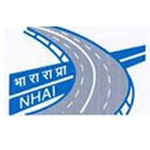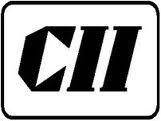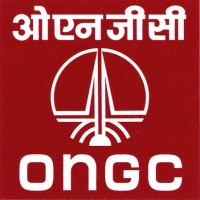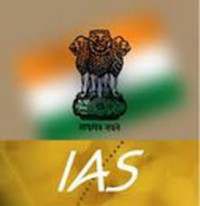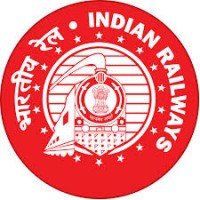The year 2015 has seen strengthening of the resolve of the Ministry of Road Transport and Highways to create and maintain a countrywide network of road infrastructure that is mechanically strong, designed to ensure safety for commuters and is compatible with the requirements of efficient and sustainable development. The period has seen a lot of intense and focussed activity in the sector with the Ministry having taken several initiatives towards fulfilment of its larger objectives.
STATUS OF ROAD NETWORK IN THE COUNTRY: A SHORT BACKDROP
India has about 52.32 lakh kilometers of road network, which is the second largest in the world. The length of various categories of roads is as under:-
National Highways 1,00,475 km
State Highways 1,48,256 km
Other Roads 49,83,579 km
During the current FY till 30.11.2015, 5331 Kms length of National Highways have been awarded while 3480 Kms have been constructed.
MAJOR HIGHWAY PROGRAMMES CURRENTLY UNDERWAY
1. National Highways Development Programme
2. SARDP-NE (Special programme for NE)
3. LWE (Left Wing and Extremist affected areas)
National Highways Development Project (NHDP) – Updates as on 30.10.15
The Government launched (NHDP) to upgrade and strengthen National Highways. The phase-wise details of NHDP are as follows:
| Sl. No. | NHDP Component | Total Length(km) | Completed length(km) as on 30.10.15 | Under implementation(km) | Balance for award of civil works (km) | Estimated Cost (Rs. in Cr.) |
1. |
GQ under NHDP Phase I | 5,846 | 5,846 | 0 | 0 | 30,300 (NHDP Phase I) + 34,339 (NHDP Phase II) = 64639 |
2. |
NS-EW Corridors under NHDP Phase I & II | 7,142 | 6,414 | 461 | 267 | |
3. |
Port Connectivity under NHAI | 402 | 379 | 23 | 0 | |
4. |
Other NHs with NHAI | 1859 | 1518 | 341 | 0 | |
5. |
NHDP Phase III | 12,403 | 6,634 | 3,602 | 2,167 | 80,626 |
6. |
NHDP Phase IV | 20,000 | 2,441 | 8,034 | 9,525 | 27,800 |
7. |
NHDP Phase V | 6,500 | 2,264 | 1,401 | 2,835 | 41,210 |
8. |
NHDP Phase VI | 1,000 | 0 | 135 | 865 | 16,680 |
9. |
NHDP Phase VII | 700 | 22 | 19 | 659 | 16,680 |
| Total | 55,852# | 25,518 | 14,016 | 16,318 | 247,635 |
(# included 48428 km of total NHs, 24km length of Chennai—Ennore port connectivity road, 700kms NH length under NHDP –VII, other than overlapping length of NHs (5700 kms NH length is common under NHDP-I and NHDP-V).
Improvement of road connectivity in Left Wing Extremism (LWE) affected areas
The Government has approved a scheme for development of about 1,177km of NHs and 4,276km of State Roads in Left Wing Extremism (LWE) affected areas as a Special Project with an estimated cost of about Rs. 7,300 Crore.
· Development of Vijayawada Ranchi route
Out of 1,622 km long LWE affected Vijayawada – Ranchi route, development of 600 km (net length 594 km) of State Roads in Odisha (548 km Newly declared NH and 46 km SH), not covered in any Central or State Scheme has been approved by the Government at a cost of Rs 1,200 crore on 4th November, 2010.
So far, the detailed estimates for all the 9 packages in an aggregate length of 594 km have been sanctioned at an estimated cost of Rs. 1,333 crore and works were awarded. Out of these, 2 Nos works covering 157 km length were terminated and they have been re-awarded.
Special Accelerated Road Development Programme for North-Eastern region (SARDP-NE)
The scheme has been envisaged to be taken up under three parts as under:-
Phase ‘A’ of SARDP-NE approved by the Government envisages improvement of about 4,099 km length of roads (2,041 km of NH and 2,058 km of State roads).
Phase ‘B’ of SARDP-NE, covers 3,723 km (1,285 km NHs and 2,438 km of State roads) of road. Phase ‘B’ SARDP-NE shall be taken up after completion of Phase ‘A’, which is targeted for completion by March 2017.
Arunachal Pradesh Package: The Arunachal Pradesh Package for Road & Highways involving development of about 2,319 km length of road (1,472 km of NHs & 847 km of State / General Staff / Strategic Roads) has also been approved by the Government. Projects on 776 km are to be taken up on BOT (Annuity) mode and the remaining are to be developed on item rate contract basis.
Balance length of NHs to be covered under NH (O)
| Sl. No. | Item | Length (km) |
| (i) | Total length of NH Network | 1,00,475 |
| (ii) | Length of NH under various phases of NHDP | 48,428$ |
| (iii) | Length of NH under Special Accelerated Road Development Programme for North-East Region including Arunachal Pradesh Package | 5,562 |
| (iv) | Development of road (NH) in Left Wing Extremism affected areas | 1,177 |
| (v) | Length with NHIDCL | 1,164 |
| (vi) | NHIIP (Externally aided projects) | 1,120 |
| (vii) | VGF / EPC Scheme under NH(O) | 1,730 |
| (viii) | Vijayawada Ranchi Corridor | 548 |
| Total from (ii) to (vii) | 59,575 | |
| Balance length of NHs to be covered under NH(O) | 40,900 |
$– Out of this 32,155 km is entrusted with NHAI.
Major Schemes for development of Non-NHDP NHs through NH (O)
National Highway Interconnectivity Improvement Program (NHIIP) under proposed World Bank Loan Assistance
About 1,120 km length of NHs are proposed to be improved to 2-lane NH standards following corridor development approach under the World Bank Loan Assistance in Phase-I. DPR preparation for all 11 stretches in Phase- I has been completed and 10 Contracts out of total 15 nos. have been already awarded. Loan Agreement for Phase-I (1,120 km under first tranches of Loan Assistance of US$ 500 Million) was signed with World Bank on 1 July, 2014.
For the proposed execution of projects under World Bank Loan Assistance as mentioned above, the cost of LA and utility shifting are to be borne by the Government of India as per the policy of the World Bank.
Ministry’s initiatives to leverage more resources through Private Sector Investment for development of non-NHDP NHs
About 17 projects of about 1,950 km length were identified as non-NHDP NH Sections for taking up on BOT(Toll) basis through private sector participation. However, 13 projects for about 1395 km length have been awarded under BOT (Toll) basis and a length of 846 has already been completed. The remaining stretches which could not be awarded under BOT (Toll) basis, are being awarded under EPC Mode under NH (O).
For BOT (Toll) projects, the cost for preconstruction activities are to be met from the available allocations under NH(O). The Viability Gap Funding (VGF) upto 20% of the Total Project Cost (TPC) for these projects are proposed to be met from the support from the Ministry of Finance under its VGF Scheme; the balance VGF upto 20% is to be met from available allocations of the Ministry under NH (O). Taking up of these projects on BOT (Toll) would ensure their proper long term operation and maintenance.
New Initiatives
1. Bharat Mala -5500 km – to develop roads along the international borders and coastal areas
2. Special Scheme – 6000 km – roads facilitating connectivity to religious /tourist places and providing connectivity to backward regions
3. District Connectivity – development of National Highways providing connectivity to district headquarters
4. Setu Bharatam – All the level crossings and narrow/weak bridges to be replaced by Railway Over / Under Bridges and new constructions
PROPOSED EXPRESSWAYS
(i) The Government of India has approved a plan for constructing 1000 km of Expressways under NHDP Phase-VI at a cost of Rs. 16,680 Cr. on DBFOT basis. As per approval of the Cabinet, main criteria for selection of Expressway corridors will be the traffic volume and it was approved that the highest density corridor i.e. Vadodara-Mumbai Corridor (400km) be given top priority. It was also decided that remaining 600 km will be selected out of the routes identified on the basis of traffic volume. The high density corridors approved under NHDP Phase-VI are as under:
· Vadodara-Mumbai Corridor (400 km)
· Delhi-Meerut (66km) on NH-58
· Bangalore-Chennai (334 km) on NH-4
· Delhi-Jaipur (261 km) on NH-8
· Delhi-Chandigarh (249 km) on NH-1 and NH-22
· Kolkata-Dhanbad (277 km) on NH-2 and
· Delhi-Agra (200 km) on NH-2.
In addition to above, Government has approved to take up Eastern Peripheral Expressway-135 km, which is not a part of NHDP Phase VI.
(ii) The Government has prioritized the following Expressways:
· Eastern Peripheral Expressway
· Delhi-Meerut Expressway
· Vadodara-Mumbai Expressway
In addition to the above the Government is also considering construction of a few more Expressways as follows:
· Nagpur – Mumbai
· Jaipur – Ajmer – Ahmedabad
· Nagpur – Hyderabad
· Pune – Hyderabad
· Hyderabad – Bangalore
· Amravati – Hyderabad- Bangalore
· Delhi – Amritsar- Jammu- Katra
Targets for 2015-16
During this year 2015-16, the Ministry has target to award 10,000Km of National Highways, which is 25% more than the stretches awarded during last year. Similarly, Ministry has target to complete work in 6300 km of stretches, which is around 45% more the km completed during the last year.
PPPs showing signs of recovery
PPPs are also showing signs of recovery. In 2015 -16, 7 PPP projects with aggregate length of 874 Kms and cost of Rs 11,927 Cr. have been awarded so far.
MAJOR POLICY INITIATIVES
The Government has progressively taken many policy decisions in the sector, designed to facilitate the execution of work and make it speedier, more efficient and transparent. After the important initiatives taken in 2014 which include empowering Ministry of RT&H to decide Mode of Delivery of projects, giving it enhanced appraisal powers and providing a mechanism for inter-ministerial coordination, some of the major initiatives of 2015 are as follows:
1.Exit Policy – This is aimed at improving the availability of equity in the market. The Exit Policy framework permits concessionaires/developers to divest 100 percent equity and exit all operational BOT projects two years after completion of construction. This would help unlock equity from completed projects making it potentially available for investment into new infrastructure projects across the country.
2. Fund Infusion To Salvage Languishing Projects – This initiative authorizes the National Highways Authority of India (NHAI) to intervene in projects that are in the advanced stage of completion but are stuck due to lack of funds. NHAI has been authorized to provide funds to such projects from within its overall budget/corpus on a loan basis at a pre-determined rate of return. This loan is to be recovered along with interest as the first charge from the toll receipts immediately after completion of construction.
Out of a total of 73 languishing projects, issues have been resolved for 19. Contracts for another 39 projects have been terminated and the same are being restructured and rebid.
3. Rationalized compensation to concessionaires for languishing NH projects in BOT mode for delays not attributable to concessionaires – the Cabinet has approved the same which would add to the comfort level of prospective project concessionaires.
4. Amendments to the Model Concession Agreement – A committee under the Chairmanship of Cabinet Secretary has been authorized to make amendments. Certain changes have been approved by the Committee.
5. Segregation of Civil Construction cost from Capital Cost of National Highways projects for appraisal and approval – The Government has approved segregation of construction cost from cost for land acquisition, centages and pre-construction activities for the purpose of appraisal and approval of National Highways projects for the following dispensation:
(a) All NH projects with a civil construction cost of up to Rs.1000 crore shall be appraised by SFC/EFC/PIB headed by secretary, Road Transport and Highways and approved by Minister, RT&H.
(b) All NH projects with a civil construction cost above Rs.1000 crore shall be appraised by PPPAC/EFC/PIB headed by Secretary, Department of Economic Affairs/Expenditure and approved by CCEA.
This measures will help cut down delays in the process of appraisal and approval of NH projects.
6. Hybrid Annuity Mode of Delivery – A new mode of delivery under Public-Private Partnership (PPP) mode, namely Hybrid Annuity Model, is being promoted for awarding road projects for implementation under which 40% of project cost is being provided by the Government to the concessionaire. Remaining 60% is to be arranged in form of debt and equity to be compensated over 15 years as bi-annual annuities.There is separate provision for O&M payments by the Government to the concessionaire. The private party does not have to bear the traffic risk. All the payments have been inflation indexed by a Price Multiple Index which is a weighted average of WPI and CPI (IW) on 70:30 bases. This mitigates the inflation risk for the developer.
21 Highways projects have been identified to be implemented on this Model in the current fiscal.Confidence of the stakeholders in this model is evident from the fact that for the Meerut-Bulandshahr project, 4 bids have been received till the Bid Due Date of 09.12.2015. The bids are currently under evaluation.
7. NHAI Issues Tax Free Infrastructure Bonds – National Highways Authority of India is raising funds through public issue of tax free, secured, redeemable non-convertible bonds with Face Value of Rs 1,000 each for an amount of Rs 1,000 crore with an option to retain over subscription of upto additional Rs 9,000 crore, aggregating upto a total of Rs 10,000 crore.
8. Road Transport and Safety Bill, 2015- Ministry of Road Transport and Highways is working on a proposal to replace the “Motor Vehicles Act, 1988” with a new Act namely “The Road Transport and Safety Bill, 2015” which inter-alia proposes to put in place the National Road Safety and National Transport Authority which would be tasked to address the engineering, education, enforcement, monitoring and emergency care standards for road safety. The Bill also tries to remove the practices which are adverse to road safety and efficient use of transport system. It also proposes to bring Multi Modal Coordination Authority to improve the efficiency in the transport sector. On the advice of PMO, the latest version of the Road Transport and Safety Bill, 2015 was sent to all the States/UTs on 4th June, 2015 seeking their comments/views. About twenty State Governments/UTs have so far furnished their comments. Reminders to States/UTs from where comments/suggestions have not been received were sent.
PROMOTING ROAD SAFETY
“Government of India is committed to improving safety, efficiency and sustainability in the transport sector and believes that only a safe system can be sustainable in the long run.” Minister of Road Transport and Highway Shri Nitin Gadkari said this while addressing the global conference on traffic safety in Brasilia in November this year. This is a reiteration of the government’s objectives to make Indian roads safe for the public and bring down the number of fatal accidents. The government has taken many steps in this direction during the past years and efforts continued in this direction during 2015. The highlights of the initiatives are as follows:
1. Road safety is being accorded highest priority and safety elements are being incorporated into designing of roads.
2. Steps are being taken to identify black spots on highways and take remedial measures to reduce accidents at these spots.
3.Road Transport and Safety Bill, 2015, which is in an advanced stage of consideration by the government, proposes an integrated approach to road safety and road transport .
4. Integrated Vehicle Registration and Driving License System – Government had developed applications http://vahan.nic.in for vehicle registration and Sarathi for driving licence. NIC has seen 100 % success in the deployment of these across the country. State Registers and National Registers have been created to consolidate the data base and all states and UTs have been connected. The National Registry contains more than 16 crore vehicle records and 6 crore license records. The State Transport Departments have access to the digitized data on registration and license. Various government and non government agencies also have access to the data. Various citizen-centric services are being rolled out based on the NR and SR applications. Vahan and Sarthi applications are now being revamped into web enabled, centralized architecture to provide unified, cloud enabled delivery of services. The application will be designed to meet the different requirements of various states and UTs and will have features like single sign on, biometric authentification, multiple option for e payment, SMS intimation etc. States are also being given incentives to enter their data so that there can be a single data base for the whole country.
5. Automated Camera Based Driving Test System – This test system developed by CIRT Pune provides an unbiased and transparent driving test mechanism with lesser human intervention, It is being used for testing license aspirants in Pune and Pimpri Chinchwad regions. The system is also being set up at Chandigarh .
6.Cashless Treatment for Road Accident Victims – This project was launched in August 2014 on a pilot basis on the following stretches of National Highway-
i. Vadodara-Mumbai stretch of NH 8
ii. Ranchi – Rargaon – Mahulia stretch of NH 33
The purpose was to provide prompt medical care to accident victims during the Golden Hour. A toll free number 1033 has been started for reporting accidents. A 24X7 Call Centre has been set up to receive reports of accidents, deploy ambulances, alert police, hospitals and other such agencies.
7. Safety of Women in Public Transport Under Nirbhaya Fund Scheme – This is a scheme that proposes to provide for the safety of women in public transport A contract was signed between MoRTH and Delhi Integrated Multi-Modal Transit Systems Ltd (DIMTS) to provide Project Management Consultancy for smooth implementation of the project. Under this scheme, following activities have been undertaken:-
- Concept Report, Technology Analysis Report, Detailed Specification document for GPS and detailed specification document for CCTV have been finalized.
- Draft Request for Proposal for selection of agency for design, implementation, operation and maintenance of the back-end system for National Level Vehicle Security & Tracking System and Draft Detailed Project Report has been submitted by Consultant.
(i) A core committee was formed under the chairmanship of Prof. N. Balakrishnan to review the schemes under “Nirbhaya Fund”. The Committee recommended for implementation of the MoRTH scheme on a pilot basis at two cities before its roll out on a national level.
(ii). The Principal Secretary to Prime Minister in meeting held on 19.05.2015 has directed MoRTH to re-examine the objectives of the scheme in line with core committee recommendations.
(iii) At present, feasibility of the scheme is being re-examined in line with core committee recommendations.
PROMOTING SUSTAINABLE DEVELOMNENT
Many initiatives were taken by the Ministry to promote sustainable development. These include :
1. Green Highways (Plantation, Transplantation, Beautification and Maintenance) Policy – 2015
The Government has launched the Green Highways (Plantation, Transplantation, Beautification and Maintenance) Policy – 2015. The vision of the Policy is to develop eco-friendly National Highways with the participation of community, farmers, NGOs and private sector. The policy will help to improve aesthetics of the project corridors and places of importance by planting selective ornamental trees, landscaping and turfing with grasses and ornamental shrubs. The plantation along the highway will help to reduce the impact of air pollution and dust and will check soil erosion at the embankment slopes.
2. Ethanol – Fuelled Bus- Notification was issued for mass emission standards for flex-fuel ethanol E85 and ED95 . This Notification will enable vehicle manufacturers to manufacture vehicles running on bio-ethanol E85 and ED95. A bio-ethanol fuel bus is already under trial in Nagpur.
3.E-rickshaws and E-carts – After laying down statutory norms / specifications for construction and maintenance of E rickshaws and facilitating their registration last year, the Government promulgated an Ordinance for giving relief to drivers of E-rickshaws and E-carts. The Ordinance enables the grant of driving licence for E-Rickshaw and E-Cart drivers holding LMV licence, without waiting for the prescribed one year period required for transport vehicles.
4. Bio- CNG and Bio- Diesel – Notification has been issued for norms for the use of Bio-CNG for testing and exhaust emission for vehicles running on Bio-CNG. With this notification, the vehicle manufacturers can manufacture, sell and get vehicles fuelled by Bio-CNG in the country. Draft Notification was also formulated for Mass Emission Standards for Bio-diesel (B 100) fuelled vehicles. Oil Marketing Companies launched Bio Diesel supplies in some retail outlets at Delhi, Vijayawada, Haldia and Vizag.
5. BS IV Compliance for 4 wheelers- Notification was issued for introduction of BS IV compliant four wheel motor vehicle according to which Mass Emission Standards for Bharat Stage IV shall come into force all over the country from 1st April 2017. With this only those newly manufactured four-wheeled vehicles, which are complaint with the BS-IV standards will be allowed to be registered and move on roads with effect from the notified dates.
6. BS V and VI Norms – Draft notification has been issued advancing the date for implementation of BS-V norms roll out from 1st April 2020 to 1st April 2019 and BS-VI norms from 1st April 2024 to 1st April2021 for automobile sector.
7. Scientific Studies on Designing Greenbelt -NHAI approved a pilot project submitted by National Environmental Engineering Research Institute (NEERI), Nagpur for undertaking scientific studies on designing greenbelts along national highways. The project will be implemented on a 5 km stretch on NH-7 between Jam and Hinganghat in Nagpur region.
8. Conversion of Diesel buses to battery powered Electric – As part of a pilot project to convert diesel buses to battery operated electric buses, the first prototype of one such bus was demonstrated in Parliament in the presence of the Prime Minister. The bus will be used by Members of Parliament. 10 more diesel buses are proposed to be converted to electric for State Transport authorities.
E-GOVERNANCE INITIATIVES
The Ministry of RT&H has brought in a number of e-governance initiatives which include
1. Electronic Toll Collection – In order to remove traffic bottleneck at toll plazas and ensure seamless movement of vehicles and hassle-free collection of toll, the Government will implement a nation wide Electronic Toll Collection based on passive Radio Frequency Identification (RFID) conforming to EPC Gen-2, ISO 18000-6C standards.. For this, EFC equipment installation is completed at 248 Fee Plazas and integration with Central Clearing House (CCH) is completed on 179 Fee plazas. Interoperable EFC has been commissioned on Delhi-Chandigarh and Chennai-Bengaluru stretches of National Highways.
2.Over Dimensional (OD) and Over Weight Cargo (OWC)- A web portal has been launched for online approval of movement of Over Dimensional (OD) and Over Weight Cargo (OWC). This is expected to ensure smoother movement of heavy transport and make system corruption free.
3. Online Bill Payment – New Web Based System inaugurated to make payment process for National Highway works more transparent. The new monitoring system is also expected to facilitate easy communication between various offices and allow a user to track the status of a bill.
4. INAM-PRO- a web portal was launched to facilitate monitoring of supply of cement and expedite placing of purchase orders by users . The portal, designed by the Ministry of Road Transport & Highways is designed to ensure complete transparency in the supply of cement, so as to achieve reduction in the cost of construction of rigid pavement.
5.Road Asset Management System (RAMS) – A state of the art integrated data collection system was launched. The system will compile information on road assets, condition of the pavements and traffic through use of laser technology. It will assist in developing an accurate and scientific maintenance planning mechanism, finalizing road safety measures and development of the National Highways network in India. The data collected will be stored and managed through a web based application, which will be hosted in the public domain. The application, when fully developed, can also be accessed by smart phones. The development of Road Asset Management System (RAMS) for the entire National Highways along with collection of requisite data over 3,000 km of the pilot road network is underway as part of the Prime Minister’s Digital India initiative. The data collection over the pilot network of 3,000 km commenced from Nagpur on 5 May 2015 on trial basis.
6 .Toll Management Systems- Toll Management Systems including CCTV Surveillance, Weigh-in Motion, Static Weigh Bridge, at Toll Plazas of Public Funded Projects are being implemented
7.National Highways Toll Information System – A web portal www.nhtis.org has been launched to provide road users valuable information about the National Highways and Expressways, including applicable user fee rates at Toll plazas.
8. e-Pace – (Project Appraisal and Continuing Enhancement ) is a tool that captures all information about projects being executed by Ministry of RT&H, NHAI and NHIDCL across its entire lifecycle.. The information will be in public domain. The tool will help in monitoring of the projects and accelerating their speed.
. Data for over 1500 projects have been entered so far
- Automatic Traffic Counter and Classifier (ATCC) -To standardize the process of data collection and creating of central data repository, traffic surveys on National Highways using Portable Automatic Traffic Counter and Classifier (ATCC) Systems is being conducted. Total 1609 locations have been divided in 7 zones. 1st round of surveys have been completed on 1410 locations. The data for 830 locations have been uploaded on the web server.
- Integration of border check posts with fee plazas – AS-IS study for integration of border check posts with fee plazas on the NHs on the direction of the PMO, has been completed.
CITIZEN CENTRIC INITIATIVES
- Wayside Amenities – 39 locations have been finalized for setting up of wayside amenities on National Highways. The proposed amenities include parking, restaurants/ low cost dhabas, telephone booth, WiFi, ATM, fuel station, rest room, repairshops, chemist shops, handicraft shops etc.
2. Discontinuation of toll at 65 fee plazas.
- 24×7 Unique Toll Free Helpline Number “1033” for Road users. on National Highways has been commissioned.
- National Highways Fee (Determination of Rates and Collection) Rules, 2008 has been amended further to incorporate stringent fee rates for preventing overloading and ensuring road safety.
GLOBAL PARTNERSHIPS


